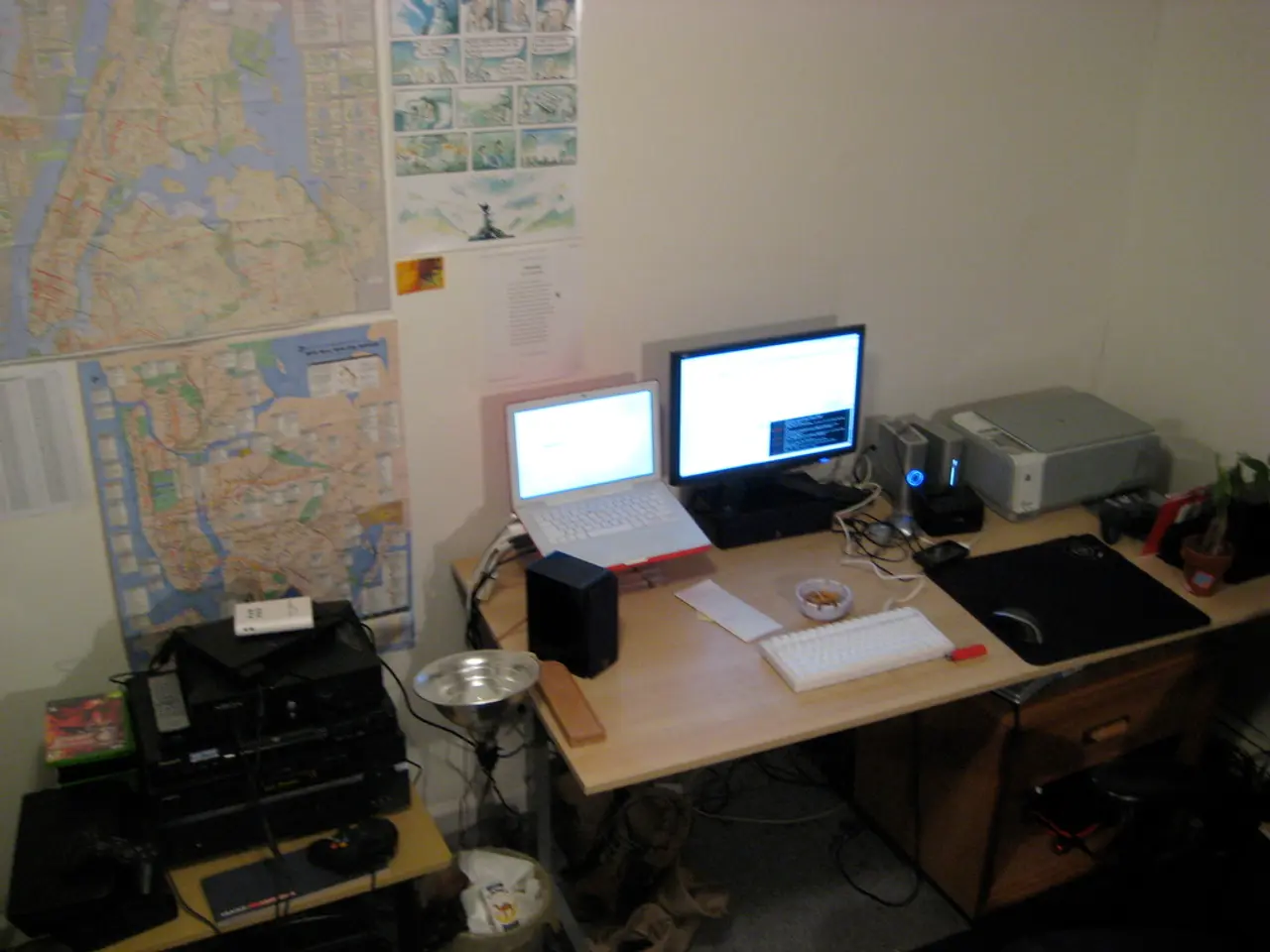Human-Computer Interaction Open to All: A Peek into Princeton's Suggested Reading on Human-Computer Interaction
Article: The Evolution of Human-Computer Interaction: From Douglas Engelbart's Demo to Turkopticon
In the realm of computing history, few demonstrations have left as lasting an impact as the "Mother of All Demos," presented by Douglas Engelbart and his team in 1968. This landmark event introduced a suite of revolutionary technologies and concepts that form the bedrock of modern computing and human-computer interaction.
The demo marked the first use of the computer mouse, a novel pointing device that enabled intuitive interaction with graphical elements, offering a departure from the keyboard-centric approach of the time. It also introduced early forms of hypertext, windowed computing environments, video conferencing, collaborative real-time editing, and graphical user interfaces. These innovations collectively demonstrated the potential for computers to augment human intellect and productivity, creating more direct and effective communication between humans and machines.
The implications of this demo were far-reaching. It laid the conceptual and practical groundwork for graphical user interfaces (GUIs) that became standard in personal computers, directly influencing systems like the Apple Macintosh and Microsoft Windows. By pioneering interactive computing and collaborative tools, Engelbart’s work revolutionized software design, emphasizing user empowerment and intuitive control mechanisms. The invention of the mouse itself transformed human-computer interaction, making digital navigation much more accessible, a primary input method alongside touch and voice today.
Engelbart’s approach highlights the importance of designing technologies that extend human capabilities rather than merely automate tasks. The focus on collaboration and real-time interaction suggests that emerging technologies, such as augmented reality (AR), artificial intelligence (AI), and mixed reality environments, should aim to amplify collective intelligence and social connectivity. The demo underscores the value of modular, flexible interfaces, advocating for adaptable systems that can cater to diverse user needs and evolving workflows.
Fast forward to the present day, and the lessons from Engelbart's demo continue to inspire the design philosophies behind emerging technologies. Looking for more opportunities to creatively use technology to improve person-to-person and mediated conversations can help create more meaningful interactions in this increasingly digital world.
In response, the authors present Turkopticon, a web browser extension designed for workers to rate and review their employers on reliability, fairness, and payment practices. The paper "Turkopticon," which discusses the labor dynamics of gig work, particularly on the Amazon Mechanical Turk platform, encourages a broader discussion about the impact of technology on labor dynamics. It urges for a more inclusive conversation that involves not just computer scientists but also sociologists, economists, and policymakers.
Turkopticon aims to foster more equitable employer practices and help employees make more informed decisions about which tasks to accept. The paper emphasizes the importance of considering the ethical implications of design choices in technology, particularly in platforms that involve human labor. It highlights the power imbalance between MTurk employers and workers, with employers sometimes exploiting workers by withholding payment post-task completion.
This paper is a testament to the potential of technology to empower workers and promote fairness in the gig economy, but it also highlights the need for ongoing vigilance and proactive measures to ensure that technology does not perpetuate or exacerbate existing inequalities. Turkopticon serves as an example of how technology can be used to address power imbalances and promote fairness in the gig economy.
For those interested in delving deeper into the fascinating world of Human-Computer Interaction (HCI), the course COS 436: Human-Computer Interaction, taught by Professors Andrés Monroy-Hernández and Parastoo Abtahi, offers profound insights on how technology shapes our lives and the importance of design considerations in emerging technologies. The first exciting reading is "The Mother of All Demos" by Douglas Engelbart, presented at the ACM Fall Joint Computer Conference 1968. Another exciting reading is "Beyond Being There" by Jim Hollan and Scott Stornetta, presented at CHI 1992.
Understanding Hollan and Stornetta's key argument is crucial for recognizing how new technologies will impact the way we communicate with one another. The paper "Turkopticon" is a valuable resource for understanding the challenges and opportunities of the gig economy and for developing more equitable and ethical solutions. Engelbart's work has left a lasting impact on modern tools like Zoom and Google Docs, and his call for technology to augment human intellect continues to be relevant in discussions about generative AI.
- The revolutionary technologies introduced by Douglas Engelbart's demo in 1968, including online education tools, have continued to inspire the design of modern educational platforms that enable learning in a digital environment.
- In the spirit of fostering more equitable work practices and empowering workers, just as Turkopticon aims to do for gig workers, future innovations in technology should strive to address power imbalances, promote fairness, and uphold ethical considerations in various fields, such as education and self-development.




